Friday, 28 May 2010
Distance 27 km
Duration 5 hours 20 minutes
Ascent 298 m, descent 290 m
Map 35 of the TOP100 blue series (or Map 140 in the new lime-green series)
Topoguide (ref. 6542) Sentier vers Saint-Jacques-de-Compostelle via Vézelay
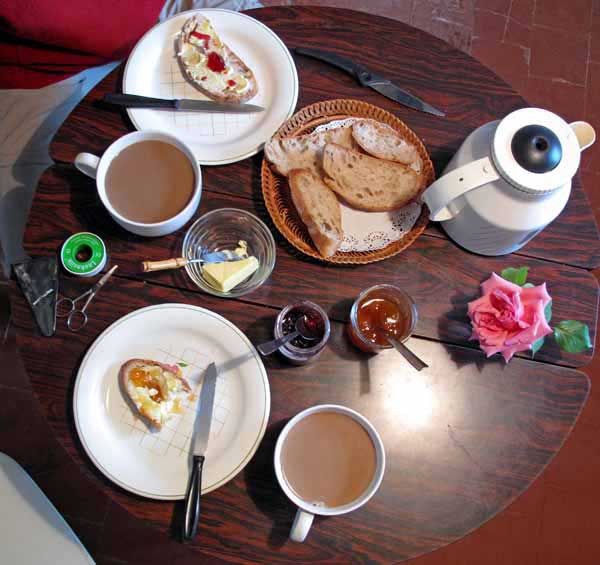
Our hosts had appeared the evening before with a tray of bread, butter and jam, and had set up the elaborate coffee apparatus so that we only had to flick one switch. Breakfast was lovely at the kitchen table with the sun streaming in, the rain having finished in the night.
Our feet were starting to feel the effects of walking through wet grass for hour after hour. We both had a few little blisters, not bad ones, but we were anxious to keep them that way.
While we ate our breakfast, the glue was setting on the soles of my shoes, now reattached to the patches after having dried out overnight.
Paul and Annie entered with a polite knock, and stamped our Topoguide in the absence of a créanciales (the religious passport that pilgrims carry). We were then required to pose outside the gîte while Paul took our photo with his ancient square film camera.
We looked through the albums of all the previous pilgrims, and saw that two other pairs of Australians had visited over the past ten years – one at the very beginning and the other only three weeks ago. In return we took a photo of them.
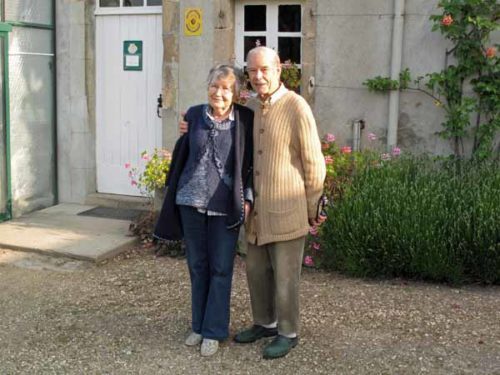
With grateful thanks and a happy feeling of repletion, we marched off, but took a different route back to the GR, straight up a lane beside the gîte.
Then it was a flat wheel track bordered by shrubbery until we came to a stream gushing out of a mill, and the track became a couple of concrete girders laid across the water. Having crossed this, we soon came to another footbridge over the river Arnon proper, meandering in a floodplain, then climbed a slight incline.
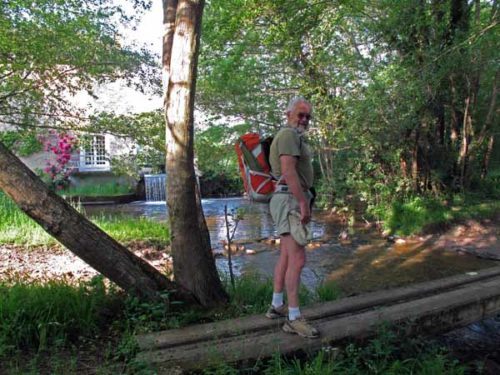
Once again we had seen a better way on the map, so we parted company with the GR as we approached a cluster of houses, and set off on what we hoped was a short cut.
It was a bumpy, churned-up farm road beside a field of wheat, but eventually it delivered us to les Riaux, via les Moricots, and we picked up the GR again, very pleased with our navigation.

We only stayed on the GR for a kilometre before another short cut presented itself and we headed directly into le Châtelet on a thread of a road through le Taillat, punctuated by occasional houses.

The last section was on the busier D951 and we when we came to the town’s ring road we climbed towards the church at the top, on the grounds that the church usually marks the centre of town. In this case it did not and we had to ask some workmen for guidance to a bar.
All the shops were down on the ring road, a bit further round than where we had entered. It was not a very prepossessing place, but there was a boulangerie and a bar, which were all we required.
The main attraction of le Châtelet was supposed to be the ruined château on the crest, but we walked right round the ring road without catching more that a glimpse of the wall amongst the untended vegetation above us.
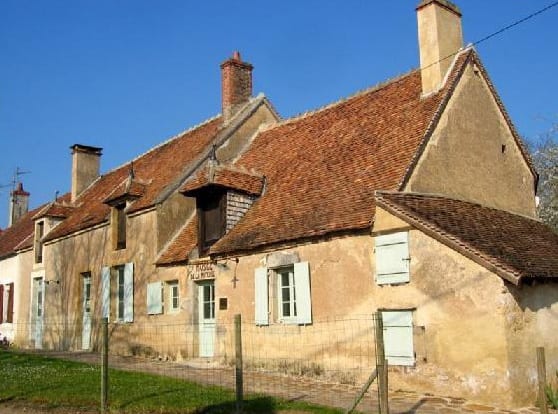
Probably we should have gone up past the church again, but we could not be bothered. The pursuit of tourist sights usually ends badly, we have found.
Setting off on the road to the south, we ignored the GR when it turned off and took the next turn onto the GRP (red and yellow), which turned out to be marked with pilgrim signs also. A short walk through water meadows brought us to the village of les Archers, famous for its pottery since the 17th century.
The present museum was formerly a workshop owned by the porcelain makers of Limoges. Several studios were still in operation and the street was lined with examples of their work as we swung past.
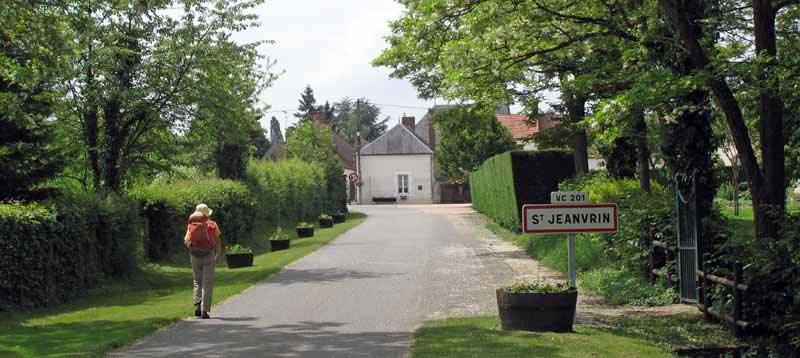
Soon the GRP turned off on a muddy track but we (and the pilgrim signs) stayed on the little road and did not stop until we came to a bridge and crossed into Saint-Jeanvrin, which was almost impossibly neat and pretty.
There were a couple of streets of immaculate cottages and a church set in a lawn, where three sturdy girls were sitting at a picnic table.
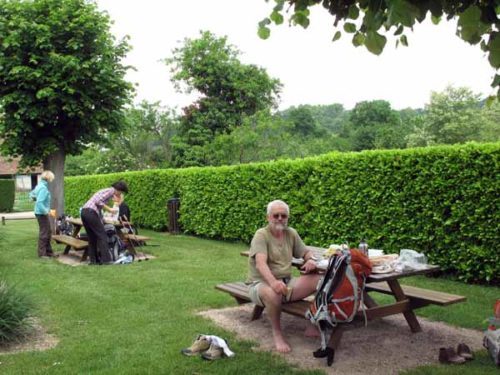
To our amazement, they were fellow walkers, even though we were not now on the GR. They had big boots, massive packs and walking poles, and turned out to be German. Both parties were delighted to exchange stories and information, fortunately in English.
After lunch we inspected the pearly white interior of the church with its frescoes and decorated arches, intimate and lovely.
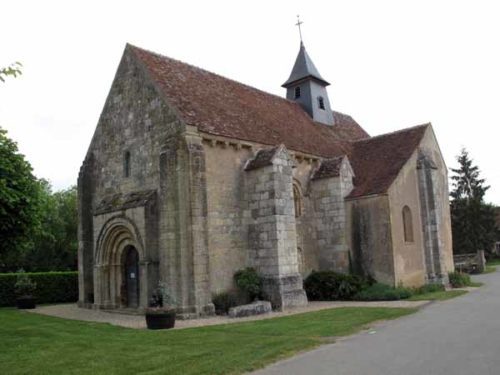
The German girls had gone when we came out and we followed them, rejoining the GR654 at Sept Fonds. Half an hour later we pulled up into Chateaumeillant, an ancient town on a ridge, which we later found out was one of the most important places in the whole of pre-Roman Gaul.
The town has been known for its wines since the fifth century, and its present fame rests on its gamay “gris”, made by crushing the grapes immediately after picking. On the main street there was a heavy old church, much restored, and just across the road, a bar for our after-lunch coffee.
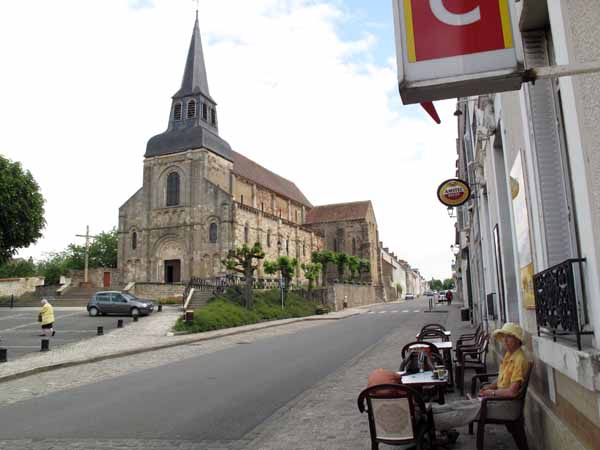
Like many wine towns, it was not particularly attractive in itself, but it had the unusual virtue of a camping ground and we looked forward to a night under the stars, or more likely under the clouds. The camping ground was about a kilometre from the centre, on an artificial lake.
On our way down there, we passed a bar/restaurant with a sign advertising a delicious-sounding menu for €11. There was also a sign offering pizzas on Friday and Saturday nights. I went in to verify that they would be open in the evening, and was assured that they would be.
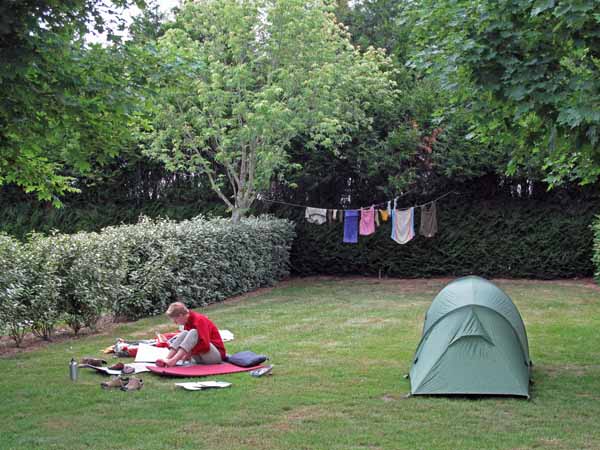
The German girls were eating icecreams outside and we stopped for another chat. They were pressing on to a gîte at Néret for the night, which we thought odd, as it was not on the GR.
The camping ground was delightfully situated and as neat as a pin. We put up our tent on a hedged lawn not far from the lake.
Our next-door neighbours invited us for a cup of tea outside their handsome caravan. They were Dutch, from Rotterdam, where they had an apartment in what looked like a huge blue vertical DVD player, right on the river (they showed us a picture of it).
We had showers and lay down to rest on the grass while our washing flapped briskly in the breeze. It was cool now that we were no longer walking.
Before dinner we walked to the end of the camping ground and found a likely-looking track heading in a good direction for tomorrow.
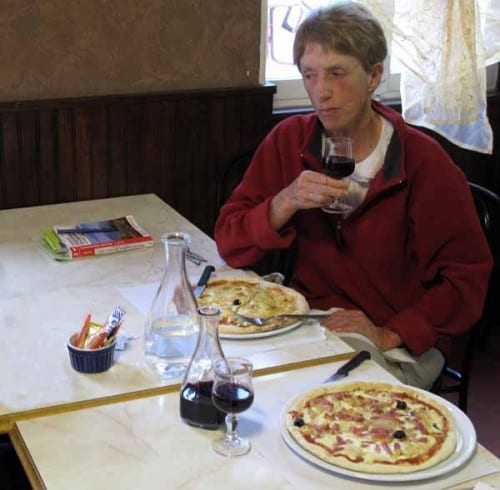
A helicopter swooped low overhead and landed on the sports field behind the lake – apparently a boy had fallen five metres onto his head and was being taken to hospital.
Up at the restaurant, we sat indoors and drank pastis and rosé. It was a plain room dominated by a television screen showing Wimbledon. Then we asked for the menu and found out that on Fridays and Saturdays it was pizza or nothing, as there was no chef.
This did not seem too bad, and we ordered one with mushrooms and one with anchovies. A great length of time later, we were served one salmon and one four cheeses, both of which were disgusting, made on cheap, stodgy supermarket bases with tasteless toppings.
It was the worst meal we had ever had in France, and most of it ended up in my plastic bag, in the hope that it would taste better for lunch the next day. As we left, we saw a mushroom and an anchovy pizza being placed in front of another bewildered couple.
Previous section: Fourchambault to Loye-sur-Arnon